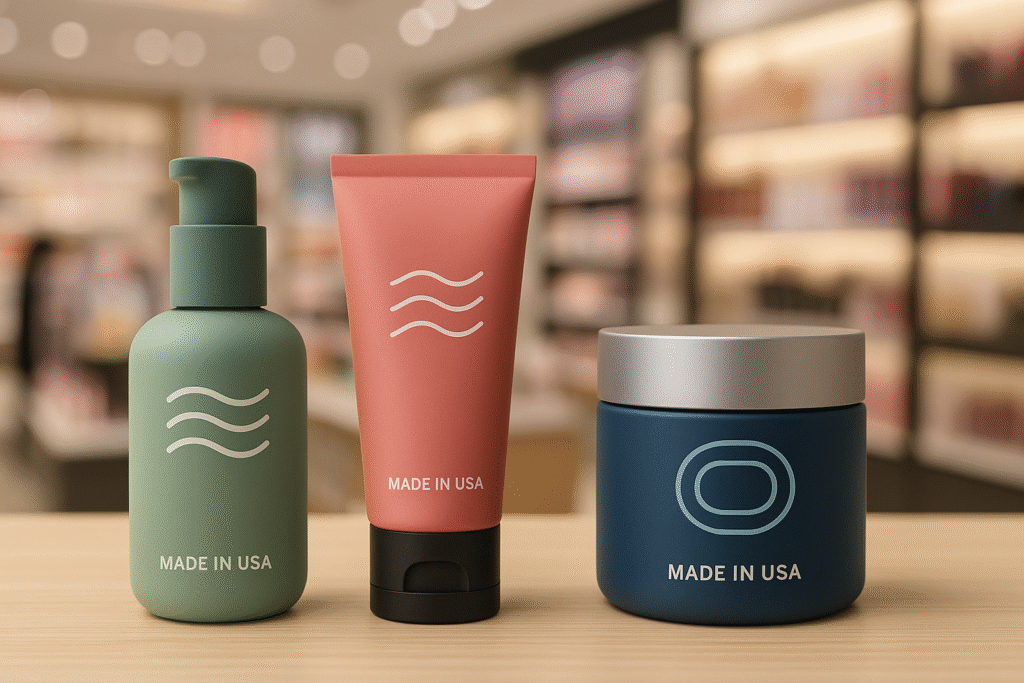Nearshore News: Russia Tariff Threat, Indonesia’s Deal, Asia Rethinks Trade, and Jewelry Shines Amid Uncertainty

Trade dynamics are shifting rapidly as countries navigate new tariffs, strategic deals, and geopolitical risks. From looming 100% tariffs tied to Russia’s war in Ukraine, to Indonesia’s major agreement with the U.S., and Asia’s search for diverse partners, global supply chains are being reshaped. Even jewelry, thriving amid a luxury slowdown, faces emerging pressures in this changing landscape.
Nearshore News Summary:
- President Trump has threatened 100% “secondary tariffs” on any country buying Russian exports if Vladimir Putin does not agree to a Ukraine peace deal by September. (CNBC)
- President Trump announced a trade deal with Indonesia under which Indonesian goods will face a 19% tariff and Indonesia will purchase $19.5 billion in U.S. goods. (The Guardian)
- Asian countries are urgently seeking alternative trade partners to reduce dependence on the U.S. (NYT)
- Jewelry is thriving despite a luxury slowdown, helped by careful pricing, strong storytelling, and the perception of jewelry as an investment. (Vogue Business)
Trump threatens 100% tariffs on Russian export buyers unless Ukraine peace deal is reached by September
Published: July 14, 2025
Source: CNBC
President Trump has threatened 100% “secondary tariffs” on any country buying Russian exports if Vladimir Putin does not agree to a Ukraine peace deal within 50 days. This marks Trump’s strongest warning yet, potentially hitting nations reliant on Russian energy.
Key points:
- 100% Tariff Threat: Trump warns he’ll impose 100% “secondary tariffs” on buyers of Russian exports if there’s no Ukraine ceasefire by September.
- Frustration With Putin: Trump expressed disappointment with Putin, saying he expected a deal months ago to end the war.
- Broader Impact on Trade Partners: Countries like China, India, Brazil, and Turkey could face steep costs if they keep buying Russian oil, gas, or other exports.
- Military Aid Boost for Ukraine: Trump announced billions in U.S.-made military equipment for Ukraine, funded by European countries and funneled through NATO.
- Escalation of Secondary Tariffs Tactic: Trump has used similar threats against buyers of Venezuelan and Iranian oil, but this is his strongest deadline-driven threat yet toward Russia’s trade.
Trump says Indonesia to pay 19% tariffs, buy 50 Boeing jets under trade deal
Published: July 16, 2025
Source: The Guardian
President Trump announced a trade deal with Indonesia under which Indonesian goods will face a 19% U.S. tariff—lower than the 32% he had threatened. Indonesia has agreed to purchase $19.5 billion in U.S. goods, including 50 Boeing jets. However, details on when tariffs and purchases will take effect remain unclear.
Key points:
- Lower Tariff Secured: Indonesia will pay a 19% tariff on exports to the U.S., avoiding Trump’s earlier threat of a 32% rate.
- Major U.S. Purchases: Indonesia committed to buying $15 billion in U.S. energy, $4.5 billion in agricultural products, and 50 Boeing jets, many of them 777s.
- Trade Relationship Growing: U.S.-Indonesia trade was nearly $40 billion in 2024, with a U.S. trade deficit of around $18 billion.
- Timeline Unclear: It’s unknown when the 19% tariff or Indonesia’s purchase commitments will take effect.
Under Attack by Trump’s Tariffs, Asian Countries Seek Out Better Friends
Published: July 13, 2025
Source: NYT
Facing steep new tariffs, many Asian countries are urgently seeking alternative trade partners to reduce dependence on the U.S. While some nations try to negotiate deals to avoid punitive rates, others look to deepen regional ties and diversify exports. However, forming a united front remains elusive, leaving Asian economies scrambling to balance U.S. demands with the need for economic security.
Key points:
- Asian Nations Scramble for Alternatives: Countries like South Korea, Vietnam, and Indonesia are pursuing new trade partnerships, including with the EU and regional neighbors, to offset potential U.S. tariffs.
- Trump’s Tariffs Sow Uncertainty: Trump’s threatened tariffs have left leaders baffled and pressured nations to offer concessions before the August 1 deadline.
- Regional Integration Still Weak: Despite efforts, Asian economies remain far from fully integrated, with gaps in agreements like the CPTPP, which South Korea has hesitated to join.
- China’s Overproduction Adds Pressure: Cheap Chinese goods flooding global markets complicate Asian neighbors’ efforts to find niche export markets amid U.S. trade tensions.
- No Unified Front Yet: Despite shared challenges, Asian and BRICS nations have not formed a collective response to U.S. tariffs, though experts suggest this may change if pressure continues.
Jewellery’s bright moment — and the looming risks
Published: July 16, 2025
Source: Vogue Business
Jewellery is thriving despite a luxury slowdown, helped by careful pricing, strong storytelling, and the perception of jewellery as an investment. However, rising tariffs, soaring gold prices, the challenge of maintaining iconic designs’ exclusivity, and competition from Chinese and Indian brands are emerging risks. Luxury houses are responding with creative design, cultural initiatives, and broader product ranges to stay resilient.
Key points:
- Resilient Sales Despite Luxury Slowdown: Jewellery sales remain robust as consumers see pieces as investments, unlike handbags, helping brands weather higher costs and luxury market softness.
- Tariffs and Gold Prices Pose Costs: US tariffs (up to 55% for some countries) and record-high gold prices could strain margins, particularly for smaller jewellery brands less able to hedge costs.
- Icons Face Risk of Ubiquity: Best-selling “icon” pieces like Cartier’s Love bracelet drive sales but risk losing allure due to overexposure, counterfeits, and Gen Z’s acceptance of dupes.
- Design and Cultural Strategies Grow: High jewellery houses lean on creative design, cultural events, and diverse price points to maintain brand strength and customer engagement worldwide.
- Rising Chinese and Indian Competition: Local brands like China’s Laopu and India’s Sabyasachi are gaining ground, challenging European dominance with innovative designs and local cultural resonance.
More blogs


